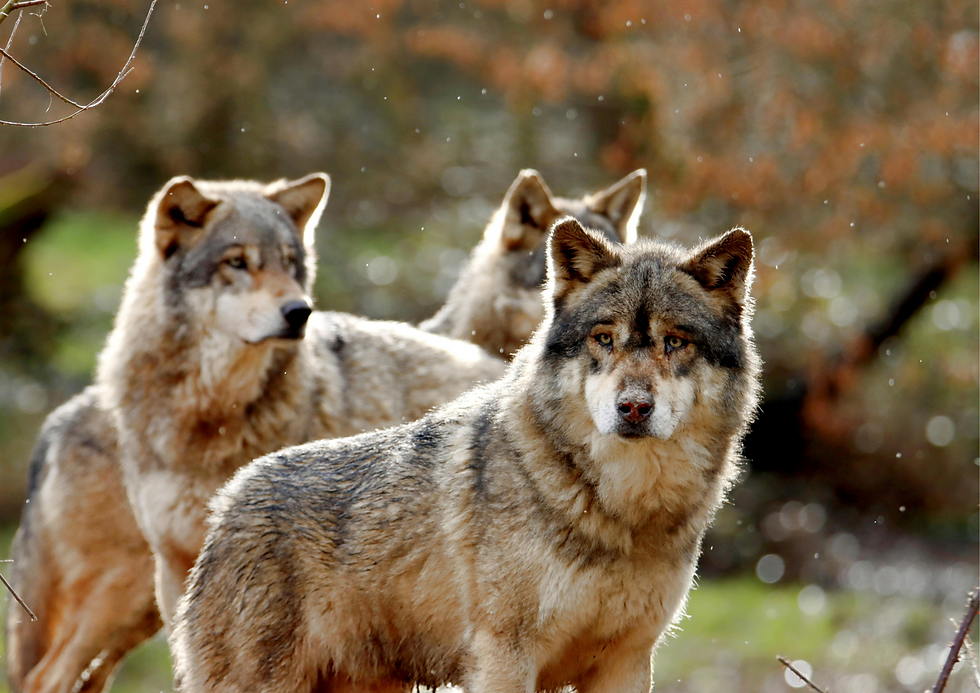The surprisingly easy way to benefit your animal’s health
- Aug 17, 2015
- 3 min read
Sound has a profound effect on the entire mind-body physiology. –Deepak Chopra
From Gregorian monks and Tibetan Buddhist monks to Hindu priests and even Native American shamans and medicine men—the ancient practice of chanting has historically been a universal way for spiritual seekers to create a peaceful space and achieve therapeutic healing. And it still is today.
Chanting is a wonderful way to “consciously breathe”—to unite our breath with sound in a way that is very healing for our emotional selves. Research has shown that chanting lowers blood pressure, and even just listening to chanting can help reduce our stress by calming our nervous system. Chanting also creates an inner feeling of well-being that radiates outward—meaning our animals can feel it, too.
Peace in ourselves, peace in the world. —Thich Nhat Hanh
Heavy emotions such as anxiety, fear, anger and sadness are very small and constricted. Chanting, on the other hand, is a very expansive exercise. The more expansive you become, the more easily you can feel emotions without being knocked over by them.
Your animals will feel this expansiveness as a tranquil, serene balance and will come forward to share it with you. They will want to be a part of this strong, balanced space that you radiate.
If we accept that sound is vibration, and we know that vibration touches every part of our physical being, then we understand that sound is heard not only through our ears, but through every cell in our bodies. —Dr. Mitchell Gaynor
Here are two ways you can use chanting for healing with your animals:
1. Chanting the first Reiki mantra: The “oh” sound is associated with the navel area, the “oo” sound with the solar plexus, and the “ay” sound with the heart/head. So this chant can help to move your energy from the earth up—just as if you are a beautiful tree who is nurtured from the earth, and growing and expanding upward. This is how all creatures on earth grow, from the earth up—and we must remember that this is also our true essence. When we remember this, we can more easily deal with the difficult situations we and our animals may face. Listen in and chant along with this beautiful, musical rendition of chanting Choku Rei, by Jonathan Goldman.
Your thoughts are your message to the world. Just as the rays are the messages of the sun. —Amit Ray
2. The Japanese Medicine Buddha Chant: There is a long Buddhist tradition of chanting this mantra for the healing benefit of animals. I have created this special audio for people to listen to (and chant along) with their animals for healing.
Maureen Petras of Reikicares-Animal Reiki in Penn Valley, California, uses this Japanese Medicine Buddha Chant to help shelter dogs. “[This chant] is amazing,” she says. “I used it recently with an unsettled puppy at the shelter I volunteer at. It was like I flipped a switch, and he went into a deep sense of peace within seconds of me starting to chant quietly. The rest of the dogs became quiet and relaxed as well—so quiet and relaxed that when I was finished with the cats in another room, I walked by the dog kennels on the way out to say goodbye, [and there was] not one bark. That has not happened once since I started a month ago. Just happy peace!”
And according to my student Caroline Thomas of Hoof and Paw Holistic Therapies in Chelmsford, England, “The chanting truly helps me to let go and to just ‘be.’ It helps with my breathing, and the animals love the grounded energy that it creates.” She reports that the Medicine Buddha Chant, in particular, helps tremendously in her work with the sanctuary horses at Remus Memorial Horse Sanctuary. “Using [this] chant, I have been able to work with a horse called Marcus who was beaten so badly, that when he came to Remus, he stood in the exact same position in the Remus stable for days, as he was so scared to move. My relationship with Marcus now is one of trust and respect. I hold the ‘Reiki’ space—chanting along with Kathleen’s audio—and stand motionlessly in the field. During these moments, he will often come and nestle his head on my shoulders. I refrain from touching him, as I know that he does not want me to touch him. He respects me for this and now looks for me while I walk through the fields.”
No worries if you’re a chanting newbie. Here are five great tips for beginners!
Tell me: Have you tried chanting with your animals?




Comments